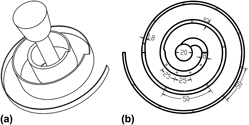Crossref Citations
This article has been cited by the following publications. This list is generated based on data provided by
Crossref.
Hosseini, Seyed Ali
Abbasi, Seyed Mehdi
and
Madar, Karim Zangeneh
2018.
The Effect of Boron and Zirconium on the Structure and Tensile Properties of the Cast Nickel-Based Superalloy ATI 718Plus.
Journal of Materials Engineering and Performance,
Vol. 27,
Issue. 6,
p.
2815.
Wang, Rui
Wang, Wei
Zhu, Guoliang
Pan, Weitao
Zhou, Wenzhe
Wang, Donghong
Li, Fei
Huang, Haijun
Jia, Yiwang
Du, Dafan
Dong, Anping
Shu, Da
and
Sun, Baode
2018.
Microstructure and mechanical properties of the TiN particles reinforced IN718C composite.
Journal of Alloys and Compounds,
Vol. 762,
Issue. ,
p.
237.
Asqary, Z
Abbasi, S M
Seifollahi, M
and
Morakabati, M
2019.
The effect of boron and zirconium on the microstructure and tensile properties of Nimonic 105 superalloy.
Materials Research Express,
Vol. 6,
Issue. 11,
p.
116540.
Zhou, Yang
Wang, Bo
Li, Shuping
Li, Wentao
Xu, Kai
Liang, Jiamiao
Zhou, Fei
Wang, Chentuo
and
Wang, Jun
2022.
On the segregation behavior and influences of minor alloying element Zr in nickel-based superalloys.
Journal of Alloys and Compounds,
Vol. 897,
Issue. ,
p.
163169.
Theska, Felix
Tse, Wilson F.
Schulz, Bernd
Buerstmayr, Richard
Street, Steven R.
Lison-Pick, Michael
and
Primig, Sophie
2023.
Review of Microstructure–Mechanical Property Relationships in Cast and Wrought Ni‐Based Superalloys with Boron, Carbon, and Zirconium Microalloying Additions.
Advanced Engineering Materials,
Vol. 25,
Issue. 8,
Singh, Sukhdeep
Kadoi, Kota
Ojo, Olanrewaju
Alexandrov, Boian
and
Andersson, Joel
2023.
The effects of chemistry variations on hot cracking susceptibility of Haynes® 282® for aerospace applications.
Materials & Design,
Vol. 228,
Issue. ,
p.
111853.
Zhao, Yanan
Guo, Qianying
Li, Chong
Yang, Zhenwen
Zhang, Jinfeng
Huang, Yuan
Ma, Zongqing
and
Liu, Yongchang
2024.
Achieving superior elevated temperature properties in additive manufactured nickel-based superalloys through unique alloy design.
Additive Manufacturing,
Vol. 88,
Issue. ,
p.
104273.
Zhou, Yang
Cui, Yanna
Wang, Bo
Liang, Jiamiao
Li, Shuping
and
Wang, Jun
2024.
Superalloys 2024.
p.
166.
ZHANG, Jun
JIE, Zi-qi
LIU, Miao-nan
and
GUO, Min
2024.
Versatile fluidity test model for cast superalloys and comparison between IN718 and IN939.
Transactions of Nonferrous Metals Society of China,
Vol. 34,
Issue. 9,
p.
2881.
